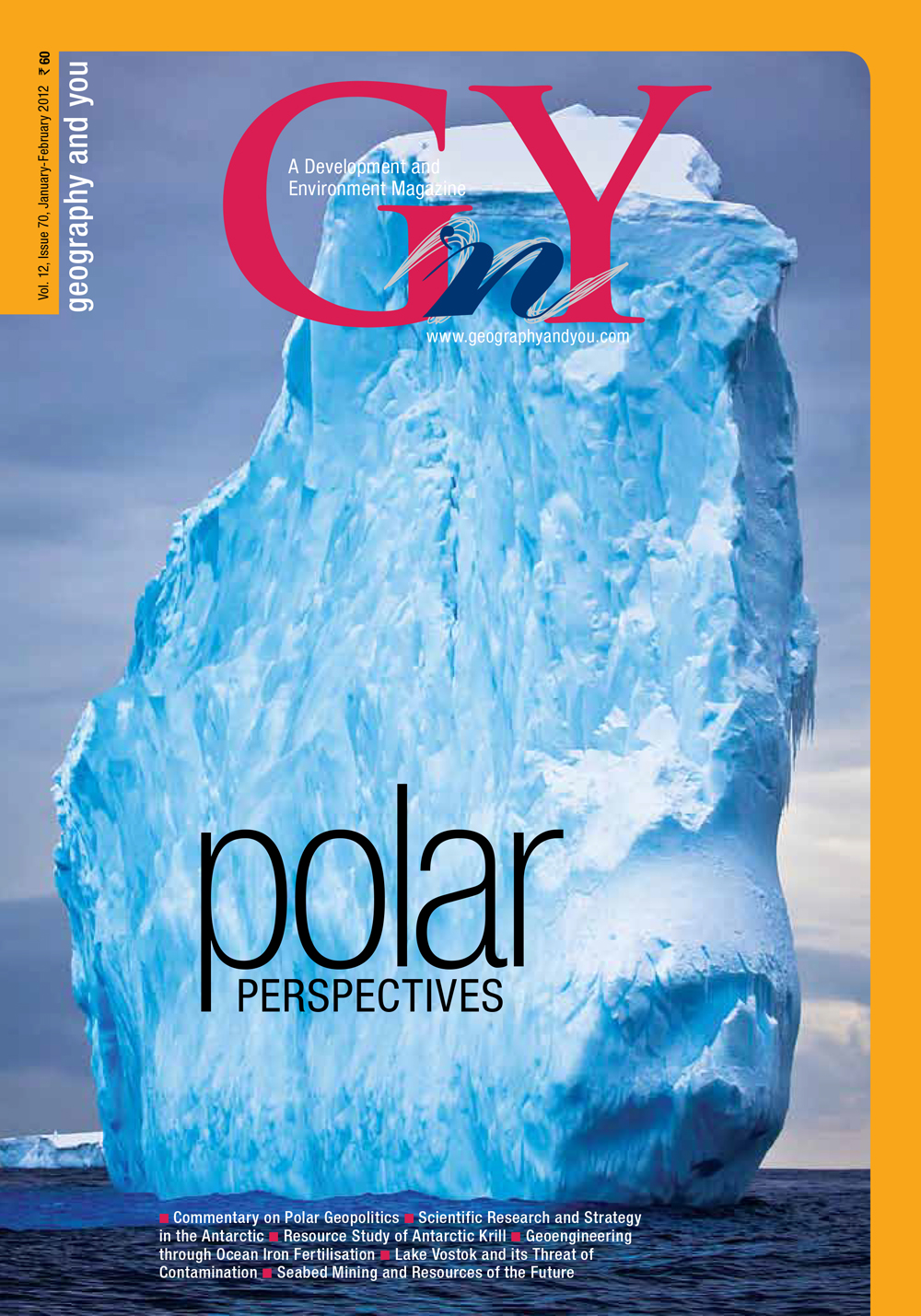
Inside this issue
Polar Perspectives
An unbiased institutional body working as an overseer and comprising of a legislative organ to construct and modulate strong political frameworks and agendas that demand sustainable approach in the exploration and exploitation of the rare and precious resources of the Polar Region is the need of the hour.
Antarctic has arguably been ‘constructed through science’ as a geopolitical and legal space and science has been used as a surrogate for effective occupation, supporting the ‘colonisation’ of Antarctic. Yet science also provided both the motive and the means to negotiate and adopt, at the height of the Cold War, the 1959 Antarctic Treaty, under the auspices of which, a successful, effective and enduring management regime for Antarctic has been developed.
Of the various macro-engineering schemes proposed to mitigate global warming, ocean iron fertilisation is one that could be started at short notice on relevant scales. It is based on the reasoning that adding trace amounts of iron to iron-limited phytoplankton of the Southern Ocean will lead to blooms, mass sinking of organic matter and ultimately sequestration of significant amounts of atmospheric carbon dioxide in the deep sea and sediments.
Antarctic krill is found in huge swarms in the waters of the Southern Ocean. The krill despite being a promising source of protein is still largely unfit for human consumption due to its high fluoride content, blackening and unpleasant flavour.
Oceans hold precious resources buried in seabeds and continental shelves. Despite legislations and international bodies upholding the Law of the Seas, fear about restrain of rights has begun to grow in developing nations with technologically advanced countries leading exploitation activities.
Oceans hold precious resources buried in seabeds and continental shelves. Despite legislations and international bodies upholding the Law of the Seas, fear about restrain of rights has begun to grow in developing nations with technologically advanced countries leading exploitation activities.
Arctic Conventions Climate change, the most significant stress on the Arctic is likely to impact the entire world as climate systems are all intricately linked. The essay attempts to understand the legal mechanisms that are functioning in the region dealing with the many uncertainties in the wake of a warming trend.
The Antarctic Treaty System (ATS) is a complex legal instrument that enlists measures in effect and its associated international instruments. Freedom of scientific research is enshrined in the Treaty and hence the ATS promotes free exchange of scientific information and mandates that observations from Antarctic must be made freely available.
India Biodiversity
Bakarwal, one of the largest nomadic Muslim tribes of India inhabits the militancy ridden vales of beautiful Kashmir and traces their ancestry to Georgia and other Central Asian Countries. The tribe in the last few decades is rapidly losing its identity and is struggling for survival in the midst of the crisis that has shrouded the Valley since the early 1990s.
Bioplastic is an important and exciting new field in biotechnology which promises to help in saving the environment and slow down the depletion of non renewable resources. Bioplastics may be derived from biomass sources, such as vegetable fats and oils, corn starch, pea starch etc., rather than fossil fuel plastics which are derived from petroleum. However not all bioplastics are designed to biodegrade.
Man-animal conflicts are on the rise. The diminishing and depleting forest areas, habitat degradation, fragmentation of the forests and vanishing corridors are forcing wild animals to move out in to the open. The result is man-animal conflict and a irreplaceable loss of India’s vibrant biodiversity. With disrupted food chains, and an ever increasing population demanding more and more land, ecosystems are degrading with a rapidity that is astounding.
India's Outdoors
The Maldives with a population of 270,000 has been isolated from the outside world for much of its history. The affable people here have adapted to island life with the main source of nutrition being fish, coconut and imported rice.
Home to myriad tribes that trace their ancestry to mythological times, songs, dances and plays of the State of Chhattisgarh are unique and indeed a treat for the senses. The beat of the drums and lilting flutes beckon you to a world of unexplored charm.
In brief
Often termed as the barometer of world climate, the polar region is an area of active debate and research. A few updates on the research front are summarised here.
Dear readers, Chaos reigns our office nowadays. Partnered with LIGHTS Research Foundation, we are all set to organise the International Conference of Science and Geopolitics, i-SaGAA 2012, at New Delhi on 9-11 March 2012. Why did we choose to work on polar issues? Well, we feel that new and signifi

